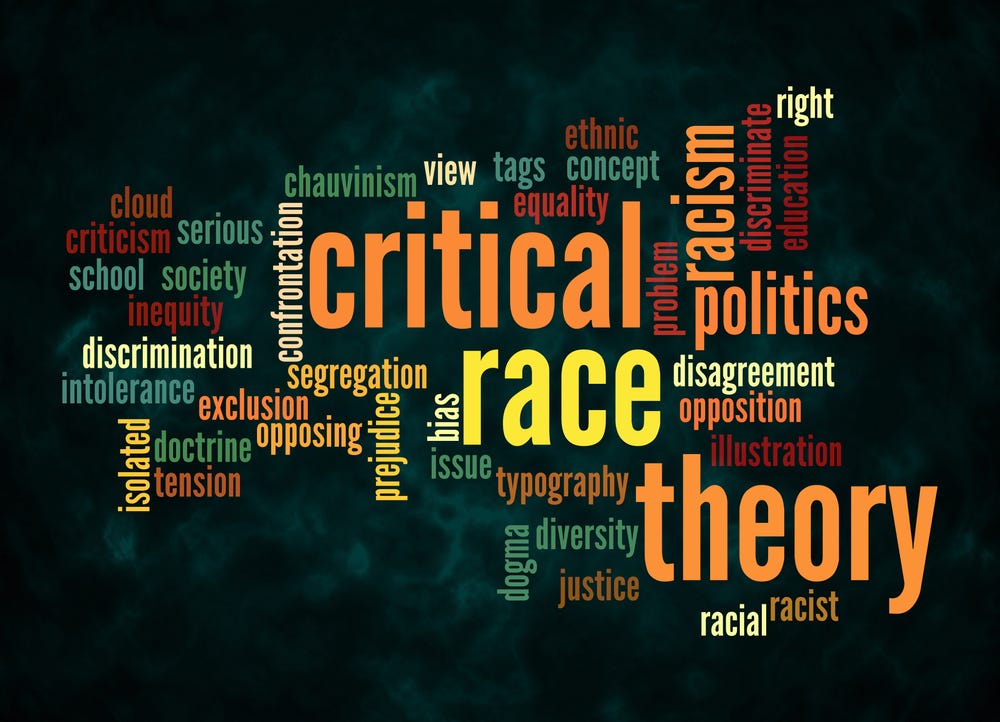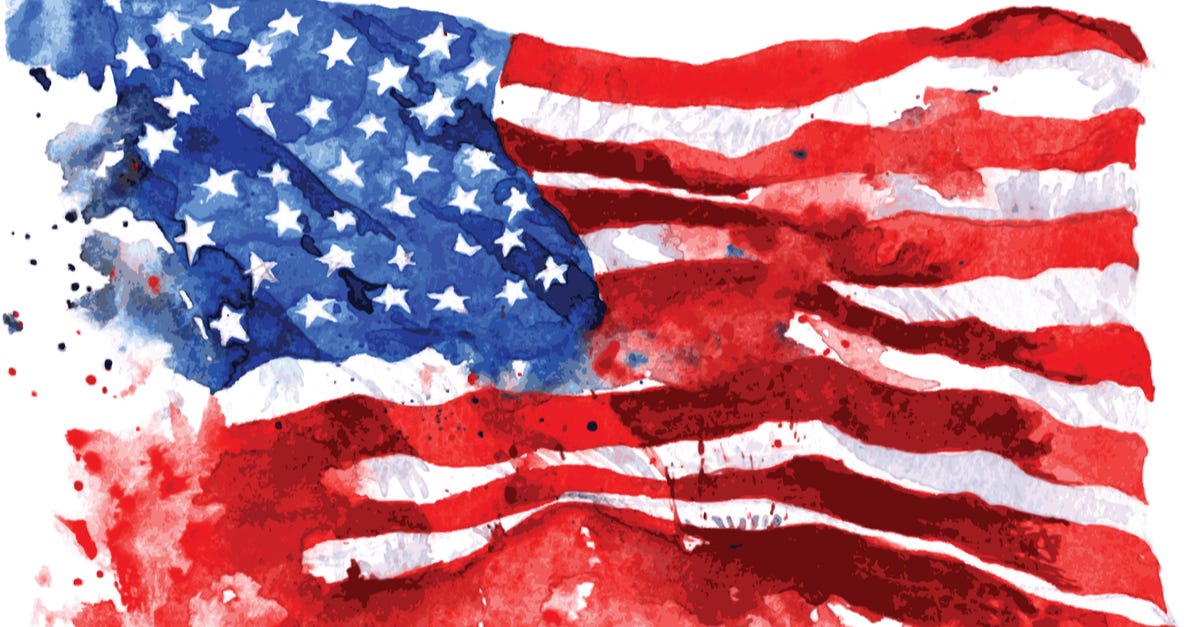E-Pluribus | September 17, 2021
Losing the thread, the genesis of Critical Race Theory, and the evolution of Progressives.
A round up of the latest and best writing and musings on the rise of illiberalism in the public discourse:
Peggy Noonan: America Has Lost the Thread
While Peggy Noonan uses the 20th anniversary of the 9/11 attacks as her jumping off points, she suggests the lessons learned from “losing the thread” on our mission in Afghanistan may have broader application. 9/11 brought the country together, but in the two decades of aftermath, we have developed into a suspicious, finger-pointing divided and divisive society, and reversing the trend will not be easy.
Just about every large business in America is now run by its human resources department because everyone appears to be harassing and assaulting each other, or accusing each other. Is this the sign of a healthy country?
Following the trauma and drama of 9/11 we started discovering in some new way our nation’s meaning—what it was in history, meant in history, meant to us. We talked about it. We saw: The first thing the firemen did after the towers fell was put up the flag.
Twenty years in our history is treated as all sin, sin, sin. We’re like mad monks flagellating ourselves. We are going through a nonstop condemnation of our past and our people and their limits and ignorance. It isn’t healthy. Reflection and honest questioning are, but not this. And so much of it comes from our most successful and secure, our elites and establishments. Regular people look and think, “But if our professors and media leaders and tech CEOs hate us, who is going to help us think our way out of this mess?” And they know someone has to, because they know in a way elites can never understand, because they have grown so used to security, that no nation can proceed in the world safely and fruitfully when at bottom it hates itself.
Read it all.
Jelani Cobb: The Man Behind Critical Race Theory
Given that one can hardly open the newspaper (usually figuratively speaking, of course) these days without seeing something about Critical Race Theory, it’s worth learning some of the history of the concept that generates so much ink and contention. Jelani Cobb of The New Yorker looks back at the career of civil rights attorney and professor Derrick Bell for some insight into the origins of CRT and how it came to be understood and/or misunderstood for what it is today.
Bell spent the second half of his career as an academic and, over time, he came to recognize that other decisions in landmark civil-rights cases were of limited practical impact. He drew an unsettling conclusion: racism is so deeply rooted in the makeup of American society that it has been able to reassert itself after each successive wave of reform aimed at eliminating it. Racism, he began to argue, is permanent. His ideas proved foundational to a body of thought that, in the nineteen-eighties, came to be known as critical race theory. After more than a quarter of a century, there is an extensive academic field of literature cataloguing C.R.T.’s insights into the contradictions of antidiscrimination law and the complexities of legal advocacy for social justice.
[…]
In the years surrounding the Bakke case, Bell published two articles that were considered both brilliant and heretical. The first, “Serving Two Masters,” which appeared in March, 1976, in the Yale Law Journal, cited his own role in the Harmony case. He wrote that the mission of groups engaged in civil-rights litigation, such as the N.A.A.C.P., represented an inherent conflict of interest. The two masters of the title were the groups’ interests and those of their clients; what the groups wanted to achieve may not have aligned with what their clients wanted—or even needed. The concept of an inherent conflict was crucial to Bell’s understanding of how and why the movement had played out as it did: the heights it had attained had paradoxically shown how far there still was to go and how difficult it would be to get there. Imani Perry, a legal scholar and a professor of African American studies at Princeton, who knew Bell, told me how audacious it was at the time for Bell to “raise questions about his own role as an advocate and, perhaps, the way in which we structured civil-rights advocacy.”
[…]
More significant, Bell was growing doubtful about the prospect of ever achieving racial equality in the United States. The civil-rights movement had been based on the idea that the American system could be made to live up to the democratic creed prescribed in its founding documents. But Bell had begun to think that the system was working exactly as it was intended to—that that was why progress was invariably met with reversal. Indeed, by the eighties, it was increasingly clear that the momentum to desegregate schools had stalled; a 2006 study by the Civil Rights Project, at U.C.L.A., found that many of the advances made in the first years had been erased during the nineties, and that seventy-three per cent of Black students around that time attended schools in which most students were minorities.
Read it all here.
Mike Sabo: What Progressives Wrought
At City Journal, Mike Sabo reviews a new book by Ronald J. Pestritto, America Transformed: The Rise and Legacy of American Progressivism. Pestritto examines how Progressives, over more than a century, developed a “fourth branch of government” (the bureaucracy) in the name of “democratizing [our] political institutions.” But instead moved the average citizen even further from involvement in the workings of the government, it deepened the divide in which we find ourselves today.
Pestritto maintains that the progressives worked toward “democratizing and unifying national political institutions,” though they sometimes differed on the means to achieve this end. Ever the radical, Theodore Roosevelt proposed policies such as overturning judicial decisions and the recall of recalcitrant judges who resisted heavy regulation of business. Herbert Croly, a cofounder of The New Republic, wanted to eliminate political parties altogether.
[…]
Pestritto argues that as the Progressives seemingly brought politics closer to the people, they simultaneously moved “policymaking power away from popular institutions,” handing it to “educated elites.” They essentially established a fourth branch of government, a vast bureaucracy that wields legislative, executive, and judicial powers—what Madison considered the very definition of tyranny—that would fully bloom during Franklin Delano Roosevelt’s presidency. What we know today as the administrative state (a phrase coined by the political scientist Dwight Waldo in the 1950s) had its genesis in the Supreme Court’s ruling in J.W. Hampton v. United States, which granted broad powers to supposedly nonideological experts insulated from the corrupting effects of electoral politics.
Pestritto notes that this new conception of government—the sharp split between politics and administration—originated in the “laboratories of democracy” of state and local governments. There, Progressive governors such as California’s Hiram Johnson and Wisconsin’s Robert La Follette pushed direct democracy: the ballot initiative, recall, referendum, the direct election of senators, and electoral primaries. Through the establishment of government by unelected commission and the rise of nonpartisan city managers, the notion of expert administration permeated state governments in Oregon, South Dakota, Texas, and Illinois, as well as cities such as Galveston, Cincinnati, Des Moines, and Cleveland.
Read the whole thing.
Around Twitter
Via Ryan T. Anderson, Clarence Thomas gave the 2021 Tocqueville Lecture at Notre Dame, touching on faith, the Constitution and how to deal with conflict and division:
From the Wall Street Journal, a disturbing story of China’s control of the internet available to the people of that country:
Christopher Rufo stirs things up with a shot across the bow of centrists:
And finally, Megan McArdle notes an unexpected twist in the plot:











